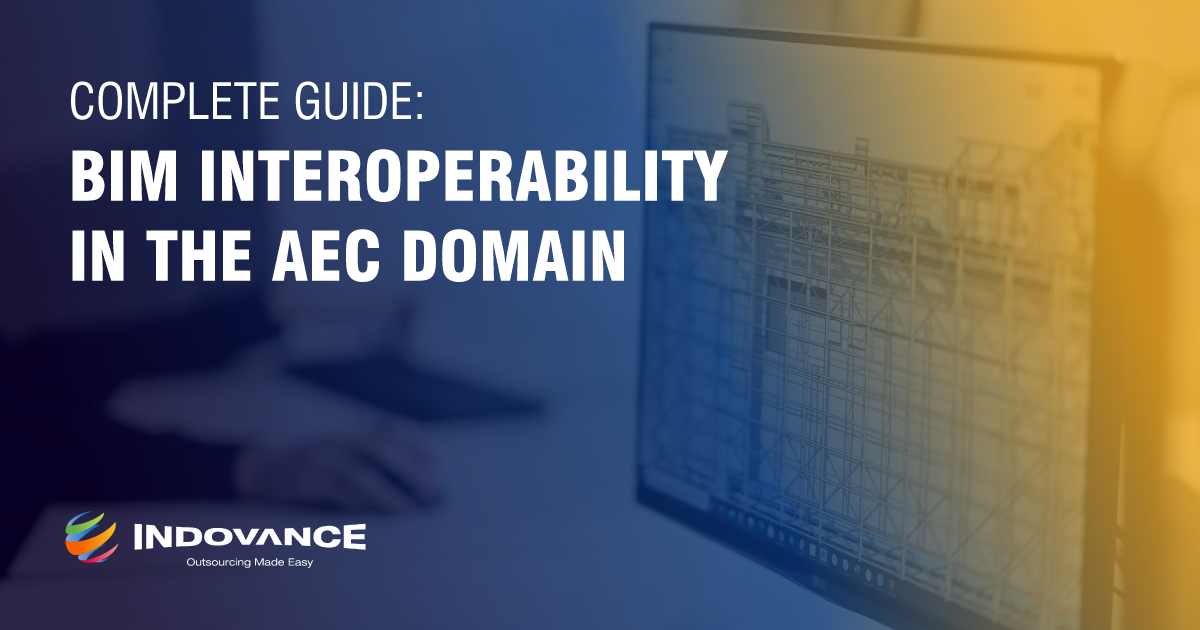Benefits of BIM Interoperability in the AEC Industry
What is interoperability in BIM?

One of the most difficult problems in the construction sector stems from distinct teams working in silos or lack of interoperability. These distinct work processes can lead to miscommunications, coordination challenges, and a variety of dangers as a result of a lack of teamwork.
However, Modern digital technology provides an even more effective means of communicating, sharing knowledge, and learning.
BIM is the solution to construction work process silos. The issue is that many AEC firms are concerned about a lack of interoperability and regard it as an impediment to BIM. Despite this issue Building information modeling (BIM) is a critical integrated data system that enables effective project planning and control in the architectural, engineering, and construction (AEC) domain.
Let’s take a closer look at BIM interoperability.
What is Interoperability?
As per ISO 37100:2016 Interoperability refers to a system’s ability to deliver services to and accept services from other systems, as well as to use the services exchanged for them to work efficiently together.
AFUL.org states that Interoperability refers to a property of a product or system that allows it to interact with other products or systems, now or in the future, in terms of implementation or access, without any limits.
Simply put Interoperability refers to the ability of computer programs & systems to exchange information efficiently.
Why is interoperability important in BIM?
Building information modeling (BIM) is an integrated data system that enables effective project planning and control in the architectural, engineering, and construction (AEC) domain.
BIM may blend geometric representations of buildings with a range of semantic information. This makes a substantial contribution to a shift in the way of information documentation and interchange among various types of models in the AEC sector.
BIM is an innovative technology that integrates two-dimensional drawings with three-dimensional models in the AEC area to integrate multiple lifecycle phases of a building or infrastructure.
BIM interoperability implies the capacity to communicate data with various systems without requiring major changes. BIM allows visualization techniques such as augmented reality (AR) to be used in the AEC domain for purposes such as defect control, facility management, and pre-construction preview of a built environment.
BIM can also be used for energy modeling and simulation, where it has been discovered that there is a communication gap between BIM applications and energy modeling tools during construction management. Integration of geographical information system (GIS) with other approaches for BIM applications helps increase data interoperability.
When it comes to software, users want to be able to transition between solutions without having to re-enter their information each time. Their data should be consistent and transferable between various systems. This is critical when it comes to BIM.
BIM interoperability develops when various teams and organizations on the same project may share the same data. All project information is maintained in one location and may be accessed by various disciplines using a variety of tools.
The concept of interoperability is critical for BIM to function and give benefits to the AEC sectors.
BIM Interoperability benefits in the AEC industry include:
Final Thoughts
After decades of poor IT acceptance and reliance on obsolete technologies such as 2D CAD, the AEC sector is now looking to Building Information Modeling (BIM) as a means of catching up with other industries in terms of information technology utilisation. This lag is evident in well-known low productivity, a lack of incentives for cooperation, and the high cost of inadequate interoperability in the AEC industry.
BIM started the process by standardizing how information is produced so that it can be easily distributed and fully utilized. The internet of things, smart buildings, mobile and wearable technology, and analytics have all contributed to this trend, allowing real-time data to be used to automate operations and inform decision-making. The national digital twin project will enable that data to be used in ways its creators never envisioned.
More than just the ability to transport information is required for BIM tools to work together. We must be able to communicate meaning. What is sent must match what is understood. To accomplish this, both parties must use a consistent information exchange reference model. Semantic BIM interoperability is required.
BIM has the ability to transform the AEC business by serving as a central repository for data mapping, information, and integration. BIM has shown to be extremely valuable to lead AEC firms.
However, BIM selection and implementation has its set of objections, fundamental among them being:
- Large investment in expensive software
- Scarcity of qualified and skilled resources
- Infrastructure requirements to support BIM technology
Therefore Outsourcing BIM services is recommended as a proven, efficient, and feasible solution to overcome the challenges of BIM implementation.
INDOVANCE INC delivers a full range of BIM modeling projects. We work on parametric family creation, clash detection, model creation for all LOD (Level of Detail), 4D, 5D, and 6D support, and model phasing, as well. We also provide complete support for CAD to BIM, point cloud to BIM, and PDF to BIM conversions.
Source: https://www.indovance.com/knowledge-center/bim-interoperability-in-the-aec-domain/












